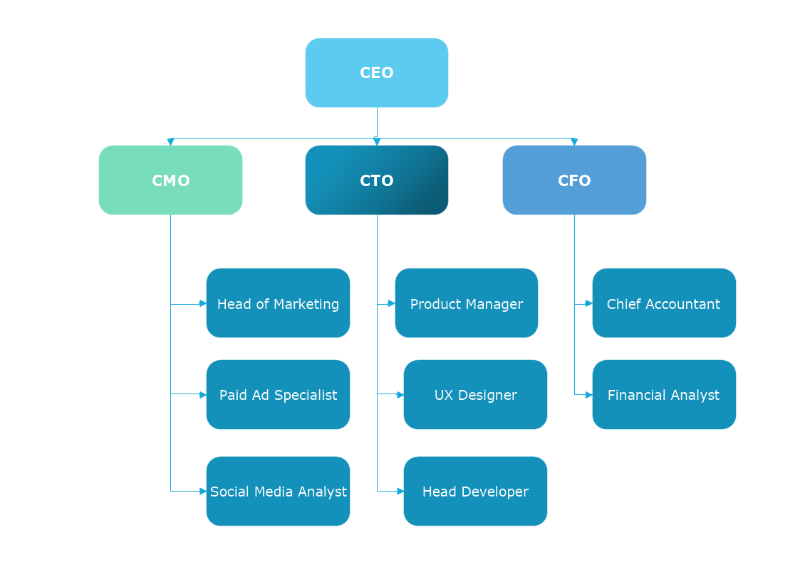An Organizational chart is a diagram that visually represents the company’s internal structure and hierarchy. It is often referred to as an organigram or organizational diagram. Most commonly organigrams show the roles, responsibilities, and relationships between individuals within an entity starting from the manager to the workers.
Organizational charts either broadly depict an enterprise company-wide or drill down to a specific department or unit. In larger companies, it may also convey the different departments or functional teams and the relations between them. In other words, a clear picture of the chain of command, flow of authority, and communication from the top to bottom.
Organizational charts show the structure of the company along with the relationships and relative ranks of its parts and positions - all the elements that form the organizational culture. Each company has its own unique culture which determines the type of organigram that will best suit the firm.
Although each organigram is as unique as each company, in general, the organizational charts can be divided into the following group types:
The organizations with hierarchical structures use different levels of authority and a vertical link, or chain of command, between superior and subordinate levels of the organization. Higher levels control lower levels of the hierarchy. The hierarchical organization chart is shaped like a pyramid.
Information and directions flow vertically in a hierarchical structure. Information flows up through each level until it reaches the top. After all the information has been received and assessed, a decision will be made at the top and will flow down through the levels of the hierarchy until it reaches the intended recipients. The top level of the hierarchy coordinates all the activities and communication of the various parts of the organization.
This most common model situates the highest-ranking individuals atop the chart and positions lower-ranking individuals below them. For example, a public company typically shows shareholders in the highest box, followed by the following in descending vertical order:
Other job titles that may follow c-suite execs include:
Organizational hierarchies generally depend on the industry, geographical location, and company size.
In a matrix organizational chart, the reporting relationships are set up as a grid, or matrix, rather than in the traditional hierarchy. In other words, employees have dual reporting relationships - to both a functional manager and a product manager. In the matrix, structure information flows both across and up through the organization.
This type of structure is used in organizations that have diverse product lines and services. The matrix organizational structure helps companies build open communication between departments, create a diverse environment, allocate resources, and shape a dynamic atmosphere within employees.
Basic matrix of an organization:
The flat organizational chart by definition has few or no levels of middle management between staff and executives. A flat organization structure is designed to make employees more productive by empowering them to make decisions.
The communication flows more easily between managers and employees, allowing for more rapid change and problem-solving. Flat organizational structures work best with smaller companies, where it's possible to decentralize some decision-making while maintaining corporate integrity.
MyDraw includes photo shapes, frames, position cards, manager cards, which will help in creating your organizational chart.
Here are some of the common Org chart symbols:
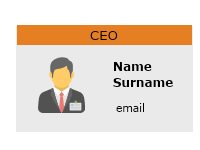
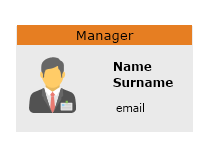
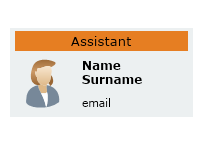
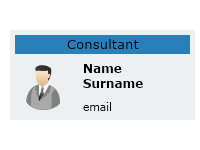
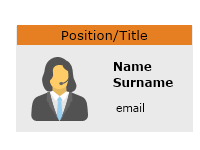
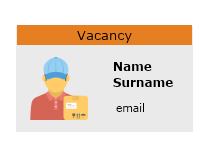
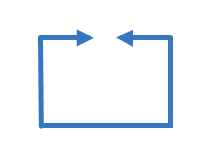
For a more comprehensive list, see our full Invalid Page Link. Page with ID:sl_shape-libraries_business_organization-chart-shapes does not exist.Organizational chart symbols list.
Applies to organizations in which the position descriptions are tightly specified and separated by the functions that each department performs.
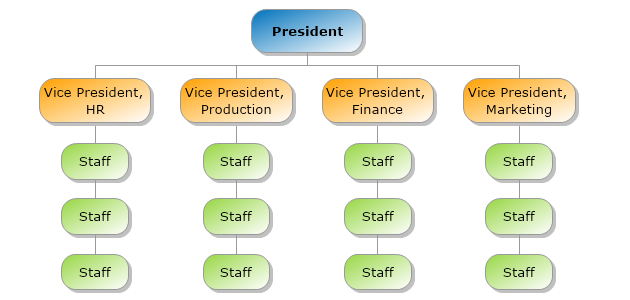
Applies to companies where the employees are grouped in teams based on their responsibilities for a particular product type or marker service.
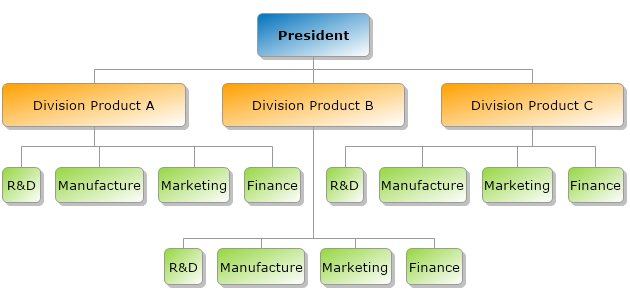
Applies to companies in which the employees are divided into both functional and divisional units.
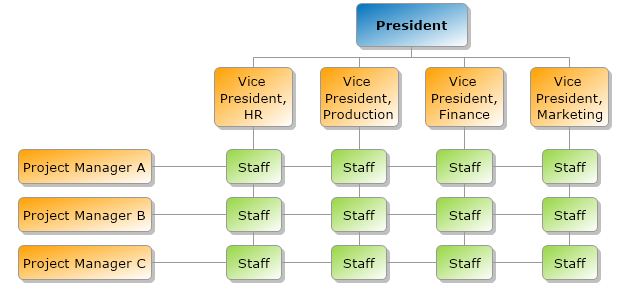
Applies to organizations where employees are grouped based on region.
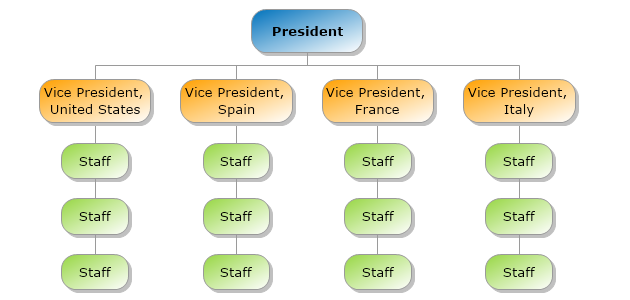
Applies to companies where employees are grouped based on the product or service provided by the company.
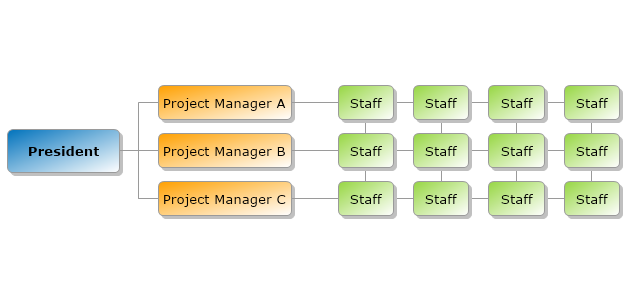
The flat organizational structure applies to work teams and company structures where all the employees have equal rights and responsibilities. In this working environment most commonly one of the employees/partners is chosen from the majority for a formal team leader or a representative of that team.
The flat organizational structure is suitable mainly for small companies and start-ups in their early stage in which the decision-making power is shared between all employees and they are held accountable for them.
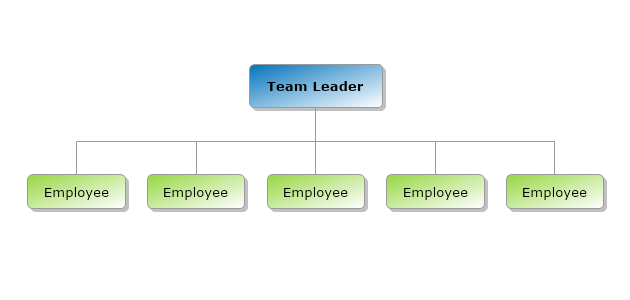
For a business to operate efficiently and systematically, it needs a planned structure that fits the style, size, and operations of the organization. The objective of organizational structure is to establish accountability, information flow, authority, and distribution of responsibilities.
Organizational charts are the most effective way of creating and defining the organizational structure of a company. They are also used for dividing the functions within the organization and keeping the related responsibilities of each position clear to everyone involved. Organizational charts also enable the employees to see whether or not a promotional channel is open. They are a wonderful way of improving the overall work performance and aid in developing the structure of reporting within the firm.
Additionally, with an organizational chart, it is easy to see if the officer’s workload is too heavy. Moreover, it helps in developing hiring and growth strategies and the improvement of the efficient interaction between the staff members.
Best practices
Tips
Adding visual elements- company logo, shapes, illustrations, photos will improve the design structure of your chart.
